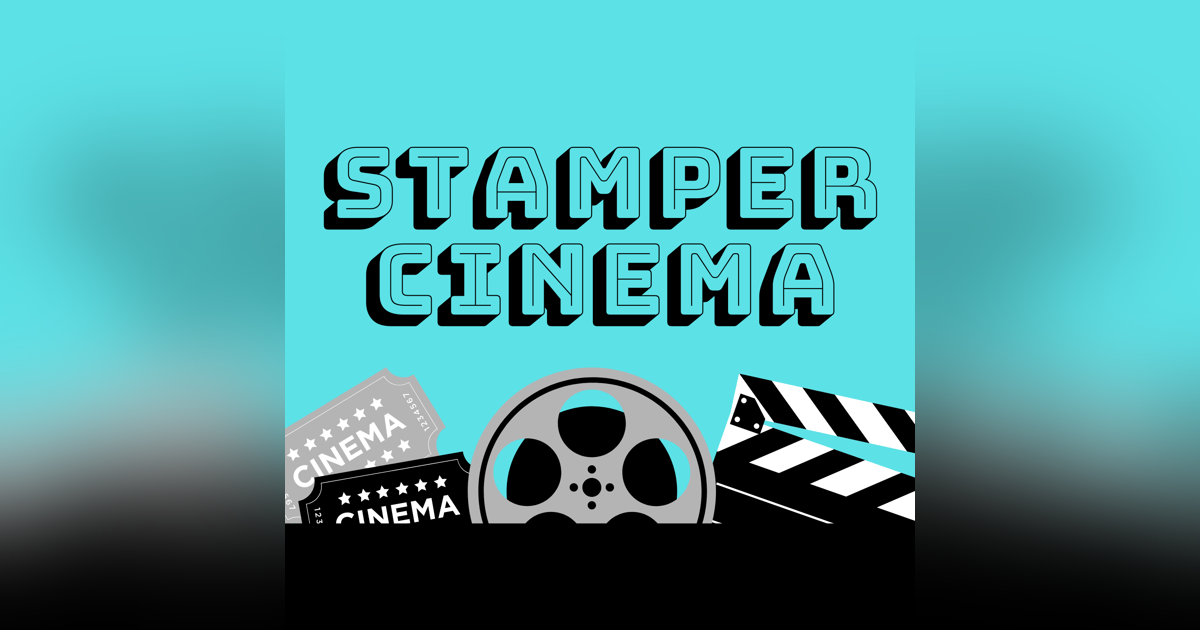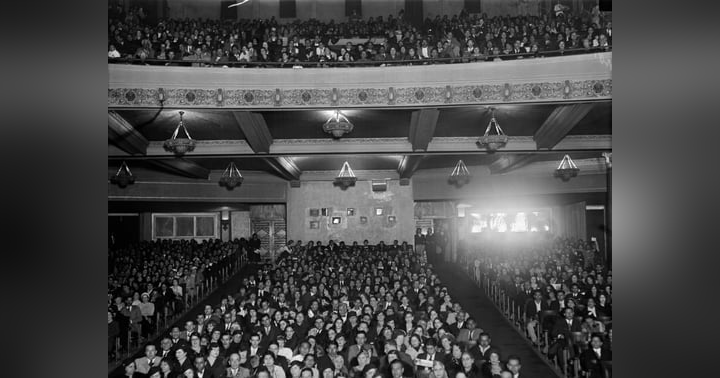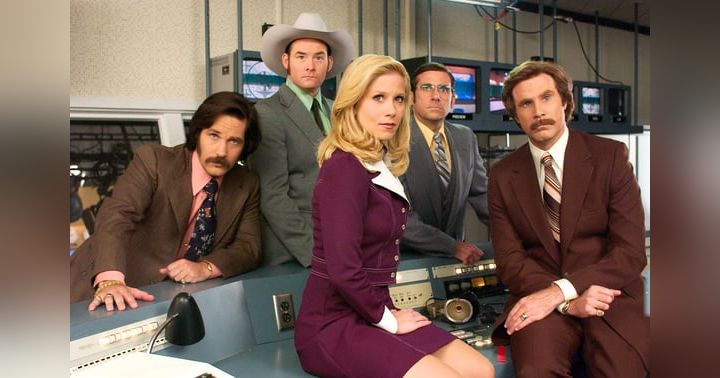The Coolest Movies Ever Made - And What That Even Means

I recently came across a question on Bluesky: what is the coolest movie you’ve ever seen? At first I was intrigued by answering the question. I had a shortlist of like 10-15 films. But then, upon deeper consideration, I became more fascinated by the key phrase of the question itself: Cool. Cool? What a wonderful, yet purely subjective phrase.
Cool is one of those words that feels impossible to define but instantly recognizable when you see it. It’s a swagger, a vibe, a cinematic wink. It’s Fonzie hitting the jukebox, Morpheus offering you the red pill, Steve McQueen driving a Mustang through the streets of San Francisco, Pee-Wee Herman dancing in platform shoes at a biker bar (yeah, I said it). But what is a cool movie? And why does that definition seem to change every few years? And what about decidedly uncool? Can uncool become iconic or even, to borrow a word, cool?
As we are acutely aware, cool shifts with culture, trends, and most certainly audience perception. What felt rebellious in the '70s might feel problematic or cringeworthy today. And what was once dismissed as pulp or schlock could now be hailed as cult cinema. Cool can be about aesthetic (sleek visuals, iconic costuming, inventive editing), but it's also about attitude. Characters who operate by their own rules. Dialogue that sizzles. Music that moves you with every scene. Cool films don’t just entertain - they seduce, intimidate, and imprint on us.
And sometimes, cool is a time capsule. It reflects what we thought was edgy, radical, or effortlessly stylish. Even if the effect doesn’t always age well.
-1970s-

First up, The French Connection (1971). Gene Hackman’s Popeye Doyle wasn’t suave in a traditional sense, but his bulldog tenacity and rule-breaking demeanor oozed tough-guy cool.
Same with Taxi Driver (1976). Robert De Niro's Travis Bickle, all damaged intensity and army jackets, gave audiences an unforgettable portrait of urban alienation.
And then there’s Enter the Dragon (1973). Bruce Lee, lean and lethal, redefined physical cool. He didn’t need a catchphrase or a love interest. His movement was the dialogue.
But not all '70s cool holds up today. Movies like Smokey and the Bandit and Cannonball Run were once the epitome of Southern-fried charisma. Today, they’re little more than faded beer commercials. Fun? Sure. But cool? I’m not so sure.
-1980s-
The 1980s shifted the cool meter. Grit gave way to gloss. Outlaws wore Armani. Synth scores ruled. Members Only jackets and Pepsi were considered cool.
Scarface (1983). Tony Montana became an icon of excess. Cocaine, tailored suits, machine guns - it was operatic and gaudy. At the time, critics absolutely annihilated it. Today, it’s endlessly quoted and meme-ified. The film’s coolness is less about subtlety and more about audacity. That and any movie with Michelle Pfeiffer is unequivocally cool. Especially Grease 2. ;)
There’s also one of my all-time favorites, Blade Runner (1982), Ridley Scott’s Los Angeles dystopian future. It’s all trench coats, neon, Vangelis, and rain. Lots and lots of rain. But 'cool' in this context meant 'brooding introspection' and style-driven world-building. And there’s few who have delivered better brooding introspection better than Harrison Ford and Rutger Hauer.
John Hughes was all about making teenage alienation cool. The Breakfast Club (1985). Five kids in detention, each a stereotype with depth was revolutionary in its minimalism. Ferris Bueller? The ultimate teen icon of breezy rebellion. Sixteen Candles (1984) made nerdy tertiary characters like Farmer Ted and Long Duk Dong the epitome of cool to geek culture. Oh! Then there's James Spader's performance as Stef in Pretty in Pink (1986). Easily the coolest absolute prick any film has ever been privy to.
However, some ‘80s films have seen cool aged into parody. Look no further than one of the 80s most beloved legends: Top Gun. Tom Cruise in aviators remains iconic, Val Kilmer was an absolute spiky-haired heartthrob, but between the locker room, beach volleyball and multiple synth-laden montages, there’s a thin line between badass and cheese. Don’t get me wrong, I still freaking love Top Gun, but cool it is not. Not any longer, that is. From a coolness perspective, it's a bit like Slider (IYKYK).
-1990s-
The 1990s exploded with postmodern cool. Suddenly, filmmakers weren’t just telling stories they were referencing other cool stories.
* Quentin Tarantino has entered the chat*
With Reservoir Dogs (1992) and Pulp Fiction (1994), Tarantino turned cinematic cool into a mixtape. Stylish criminals, nonlinear storytelling, obscure pop culture deep cuts - he mashed up Hong Kong action flicks, French New Wave, and grindhouse cinema into something fresh. But here’s the kicker: a lot of what made Tarantino’s work “cool” was borrowed. He wasn’t inventing as much as curating. And that’s not a knock. It’s what made his voice unique.
Other '90s cool flicks include Trainspotting (1996), which made heroin chic (for better or worse), and Fight Club (1999), which embodied Gen X nihilism wrapped in abs, Ikea catalogs, and mental breakdowns. The late '90s also gave us The Matrix (1999), redefining action cool with bullet time, leather coats, and mind-bending philosophy.
But once again, time alters perception. The cool masculinity of Tyler Durden now reads a little toxic. And The Matrix’s aesthetic got so widely imitated it became a parody of itself for a while... until its recent retro comeback.
Another '90s standout for me is Run Lola Run (1998). Directed by Tom Tykwer, this German thriller was an adrenaline rush of pounding techno, split-screen action, and narrative experimentation. Lola: flame-haired, tank-topped, sprinting through Berlin - became an instant icon of Y2K-era cool. The film’s style-over-plot approach, rapid pacing, and repeated timeline gimmick felt fresh and radical at the time.
But does it hold up today? Honestly it is that very question that has inspired this entire rant. I first saw Run Lola Run during the summer of 1999 and it hit me hard y'all. I fell head over heals in love with Run Lola Run. Whether it was the music, the unique style of the film, its beautiful use of chaos theory as a theme. Everything. So, yeah, I'd like to think it's held up. It’s certainly not as imitated like a few of the films above, which I believe helps preserve its uniqueness. And though Run Lola Run might not be quoted as often as Pulp Fiction, it remains a masterclass in making a small 90s film feel electrifyingly cool.
-2000s and beyond -

Films like Drive (2011) embraced minimalist, stoic cool. Ryan Gosling barely speaks, but his scorpion jacket and synthwave soundtrack say plenty. Cool, here, is restraint.
Or take John Wick - a modern-day action opera that blends martial arts, gun fu, and underworld myth. It’s cool through its choreography and sheer commitment to world-building.
Then there’s Everything Everywhere All at Once (2022), which made multiversal chaos, googly eyes, dildos(?), and nihilism cool again. It doesn’t try to be slick in the traditional sense — and that’s exactly what makes it resonate with today’s audiences.
Meanwhile, Tarantino keeps on Tarantino-ing. Films like Once Upon a Time in Hollywood (2019) still drip with references, vintage soundtracks, and deliberate coolness. But at this point, he’s less a trendsetter and more a museum curator — showing us the lost cool of yesteryear through a modern lens.
There’s a shelf life to cool. What once felt revolutionary can calcify into cliché. Overused tropes, outdated attitudes, or stylistic excess can age poorly. The line between cool and cringe is razor thin.
A perfect example: Boondock Saints (1999). Once beloved by college dorm posters and DVD collectors, its hyper-masculine cool, slow-mo shootouts, and pseudo-philosophical ramblings now feel embarrassingly try-hard. And, I'm sorry, lemme just get this off my chest, I was never a fan.
Then there are popular horror tropes like vampire or zombie films. For years and years both have been equal parts cool and uncool. But with Ryan Coogler's Sinners (2025) vampires are incredibly cool once again. Perhaps the coolest they have ever been. It remains to be seen for how long.
And then there are characters who were never supposed to be cool, yet became pop culture icons anyway. Enter Napoleon Dynamite (2004). This deadpan, awkward, llama-feeding outcast shouldn’t have been cool by any traditional metric. But that was the point. He was post-cool. Anti-cool. And in that reversal he became iconic. Same with female-driven films like Ghost World (2001), Juno (2007), and Lady Bird (2017). Characters who weren’t chasing style points, but found resonance in honesty.
So what are the coolest movies ever made? The truth is, it depends on when you ask and who’s answering. Cool isn’t a genre. It’s a pulse. It’s felt more than analyzed. Maybe that’s the joy in chasing it. Discovering those films that feel like they were made for you. Films that make you want to wear sunglasses at night, or get a poster for your wall, or just sit in quiet admiration of a line, a look, or a moment.
In the end, cool is cinema’s way of showing us who we want to be... or at least who we want to believe we are, for a couple of hours.
That's what comes to mind when I think about cool movies anyway. Well, that and Breakin 2: Electric Boogaloo.
-AJS-












